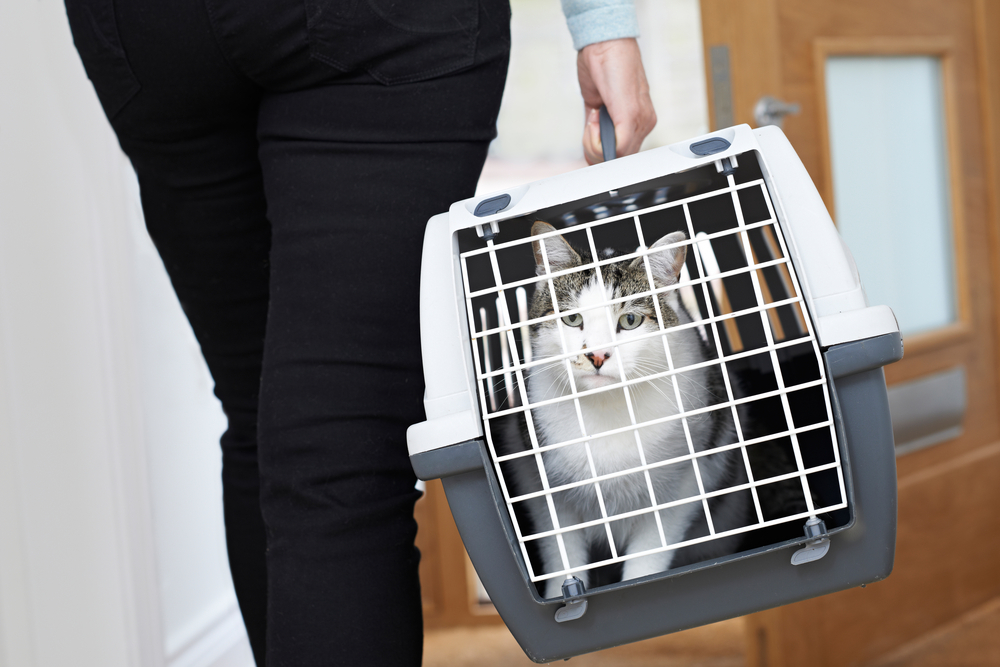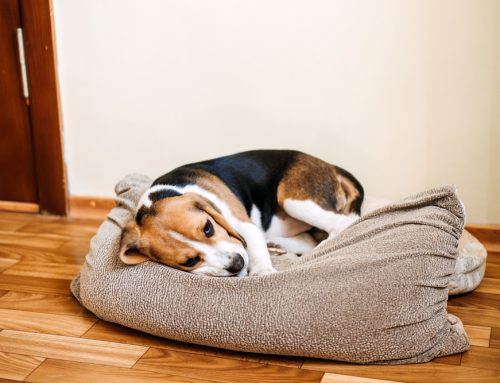Leaving your pet behind while you travel can be difficult, whether you’ll be away for a few days or several weeks. While you will always miss your pet when you’re not together, boarding provides a safe and comfortable environment for your four-legged friend. Setting up your pet for a successful boarding experience requires some planning, and our Willow Wood Animal Hospital team is sharing tips to help prepare your pet for a stress-free, enjoyable boarding experience, so you can rest assured that they are safe and happy while you are away.
#1: Schedule a wellness examination for your pet
Your pet’s wellness examination is essential before boarding to ensure they are healthy and up-to-date on their parasite preventives and vaccines. Most boarding facilities will only take in pets who receive veterinary-approved parasite control products and whose vaccinations are current. So, do your homework before your pet’s wellness examination to ensure they receive all the vaccinations a potential boarding facility requires.
Remember to bring a copy of your pet’s vaccination records for the boarding facility to keep on file. Reputable boarding facilities typically require the following vaccinations:
- Dogs — Some vaccines are required by law, but others prevent the spread of extremely contagious disease. Dogs should be current on:
- Distemper, adenovirus type 2, parvo, parainfluenza (DA2PP)
- Rabies
- Bordetella
- Leptospirosis
- Canine influenza
- Cats — Although some states do not require cats to have the rabies vaccine, a reputable pet boarding facility will. Cats should be current on:
- Feline viral rhinotracheitis, calicivirus, panleukopenia (FVRCP)
- Rabies
- Feline leukemia virus (FELV)
#2: Reduce your pet’s boarding stress
Every pet responds differently to boarding, and some pets—especially those with anxiety—may have a more difficult time adjusting to an unfamiliar environment in addition to being separated from you. To reduce your pet’s anxiety and provide them with a comfortable boarding experience, follow these tips:
- Consult with your veterinarian — During your pet’s wellness examination, ask your veterinarian about ways to help alleviate your pet’s stress and anxiety. They may suggest calming supplements or medication to manage your pet’s anxiety while you’re away.
- Use pheromones — Sprays containing appeasing pheromones, such as a ThunderEase, formerly known as Adaptil, calming collar for dogs, send the same messages to your pet that their mothers used to comfort them when they were young.
- Try a calming vest — Consider using an adjustable wrap, such as the ThunderShirt, which applies constant, gentle pressure to your pet’s body, and may help manage their anxiety.
#3: Pack your pet’s essentials

When packing for your pet’s boarding stay, provide them with the essentials they need to feel comfortable and happy while you are away. Include the following:
- Food and treats — Avoid upsetting your pet’s gastrointestinal (GI) system by ensuring you give the boarding facility enough of your pet’s regular food to last the duration of their stay. In addition, remember to include special treats they enjoy.
- Medications — Provide the boarding facility with an ample supply of your pet’s medication in the original prescription bottle, and leave clear dosage instructions.
- Leash and collar — Ensure your pet has a leash and collar with up-to-date identification tags.
- A favorite toy — To help keep your pet entertained during their stay, pack their favorite toy and a few new ones. However, leave toys that require supervision, such as rope toys or small chew toys, at home.
- Something with your scent — To provide your pet with a comforting reminder of home, provide the boarding facility with a small blanket or towel that smells like you.
When leaving your pet in someone else’s care, overpacking is easy. Pack only the essentials to keep your pet comfortable and content. If you are unsure about any of the items on your packing list, discuss them with a boarding facility team member.
#4: Choose a boarding facility that meets your pet’s needs
When choosing a boarding facility, consider an environment that works best for your pet. Ask your friends, family, and veterinarian for recommendations, and tour potential facilities before making your decision. To help ensure you choose a boarding facility in which you feel your pet will be comfortable and well-cared for, ask the following questions:
- What are the facility’s cleaning and sanitation protocols?
- Do the dogs play together supervised?
- What is dogs’ outdoor access like?
- How are cats housed?
- What are the exercise and playtime protocols?
- How much human interaction do pets receive? How long are pets left alone?
- What is the protocol if your pet becomes injured or ill?
#5: Introduce your pet to the boarding facility
If your pet is new to boarding, or they are prone to anxiety, arrange one or two short visits. Take your pet in for a few hours at a time, so they can become accustomed to their surroundings and meet the team members who will be taking care of them. Another option is to request a 24-hour boarding trial to help your pet acclimate to the facility and staff.
By following these planning tips, you help ensure your pet’s boarding experience will be safe, comfortable, and positive. To schedule your pet’s preboarding wellness examination, or to ask for boarding facility recommendations, contact our Willow Wood Animal Hospital team.







Leave A Comment